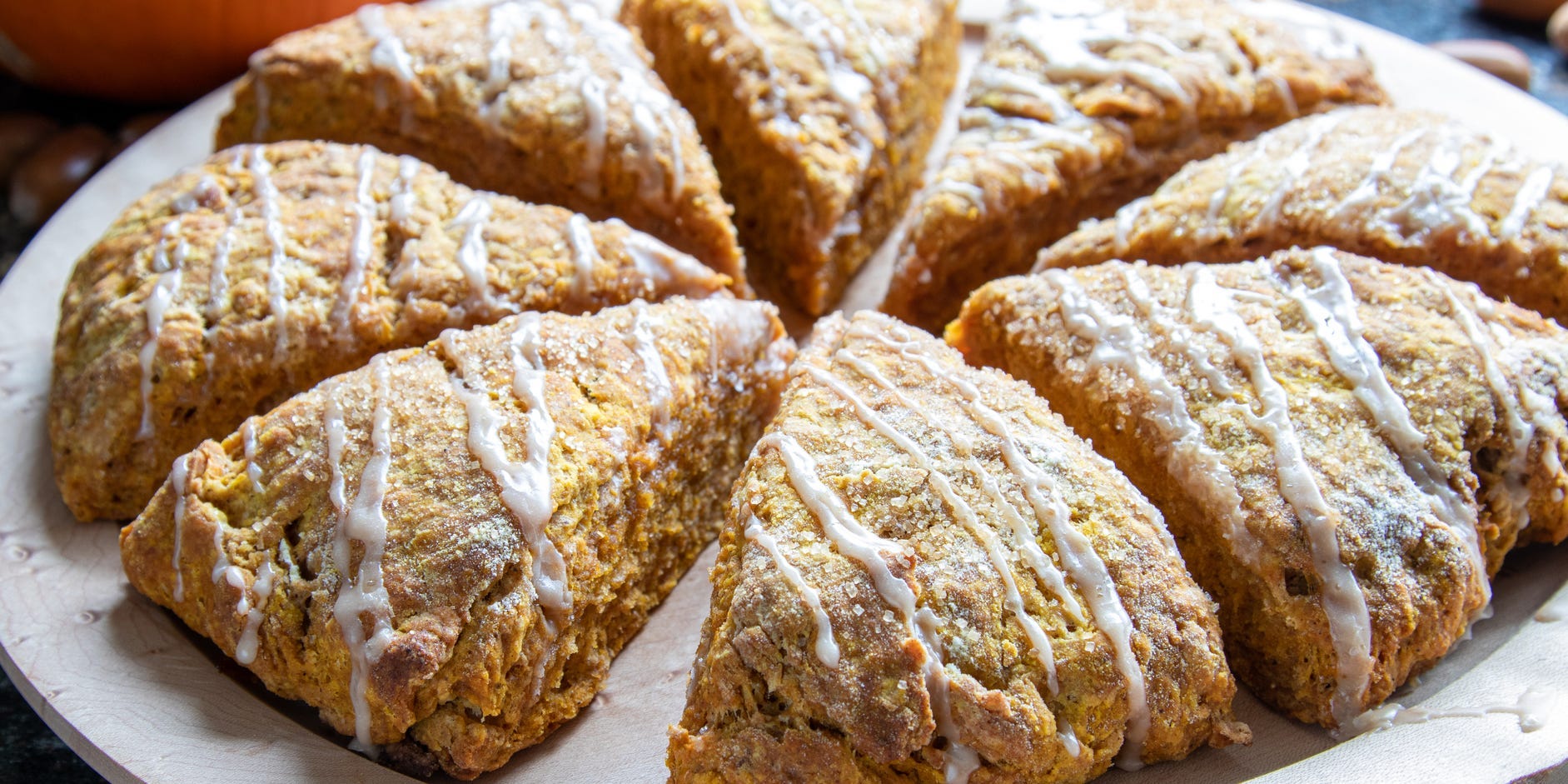
Tim M Lanthier/Getty Images
- Self-rising flour is all-purpose flour combined with baking powder and salt.
- Unlike all-purpose flour, self-rising flour has a leavening agent that causes baked goods to rise.
- Self-rising flour is easy to make and can last up to a year if stored in a cool, dark place.
- Visit Insider's Home & Kitchen Reference library for more stories.
As its name suggests, self-rising flour – a special kind of flour made from all-purpose flour, baking powder, and salt – helps to achieve a nice rise in baked goods, which is due to the added leavening agents. Self-rising flour was invented by an English baker in the 1840s. Since it combines three common baking ingredients into one, it was often used by sailors because it allowed them to conveniently make baked goods onboard ships.
Nowadays, self-rising flour is less popular but still called for in many traditional and Southern baking recipes. Devan Cameron, a professional chef who runs the food blog Braised & Glazed, says self-rising flour is often used to make sponge cakes, biscuits, scones, Yorkshire puddings, pita bread, and pancakes. Self-rising flour is simple to quickly whip up at home and, odds are, you already have the few ingredients needed.
All-purpose flour vs. self-rising flour

Diana Miller/Getty Images
It's important to note that all-purpose flour and self-rising flour are distinct, and can't easily be used interchangeably.
"Both flours are so unique for their purposes that they cannot be substituted for one another unless making some strong changes and variations," says Nitin Bali, pastry chef at Travelle at The Langham in Chicago. "If you do not have self-rising flour and your recipe calls for it, you can use all-purpose flour, but you'd have to adjust the ratio of salt and baking soda in order to get the expected result."
According to Bali, one of the key differences between all-purpose flour and self-rising flour is the protein content. Self-rising flour contains a lower protein level. This means it has less gluten, and that it tends to produce baked goods that are more tender and have less structure. In other words, if you're whipping up a batch of cookies and you want them to hold their shape on the pan without spreading out too much, all-purpose flour is a better bet.
Another factor that separates them is that self-rising flour has baking powder in it, which is a leavener. Leaveners produce tiny air bubbles that cause your baked goods to rise more. This is an advantage for achieving fluffy biscuits, pancakes, and scones, but not necessarily ideal if you're making dense, fudgy brownies.
It's not a good idea to use self-rising flour in yeast-raised bread. This is because the yeast has its own leavening effect, meaning the self-rising flour might cause the bread to rise too much and make the top to cave in. As a general rule, use self-rising flour for recipes that are meant to be airy and voluminous - otherwise, all-purpose flour is the more versatile go-to.
How to make self-rising flour
Begin by combining 1 cup of all-purpose flour, 1 ½ teaspoons of baking powder, and ¼ teaspoon of salt in a bowl. Then, using a whisk, fork, or wooden spoon, mix the ingredient until smooth and evenly distributed.
This should make enough self-rising flour for most baking recipes, which typically call for about 1 cup. However, if you need to scale up, simply multiply all the ingredients by 1.5 or 2 to make sure the ratios stay the same.
How to store self-rising flour

Lucy Lambriex/Getty Images
Self-rising flour has a slightly shorter shelf life than all-purpose flour because of the added baking powder. That's why Cameron recommends only making as much self-rising flour as you need for a particular recipe.
However, if you do have some leftover, Bali advises storing it in an airtight container in a cool, dark place, like the refrigerator. If stored this way, self-rising flour can last up to one year, after which the leavening properties of the baking powder start to decay and your baked goods won't rise as much. If kept in a humid environment, Bali states self-rising flour may only last several months. Moisture can cause mold and bacteria growth, which is why it's imperative to keep self-rising flour dry.
Insider's takeaway
Self-rising flour requires just three ultra-common pantry ingredients and a two-step process, making it super simple to make at home.
While all-purpose flour is better suited to yeast-based breads and cookies, self-rising flour is an excellent addition to biscuits, scones, pancakes, and sponge cakes.
It's best to make self-rising flour as needed for a specific recipe, rather than making it in large batches. That said, you can extend the shelf life of leftover self-rising flour by storing it in an airtight container in the refrigerator.
